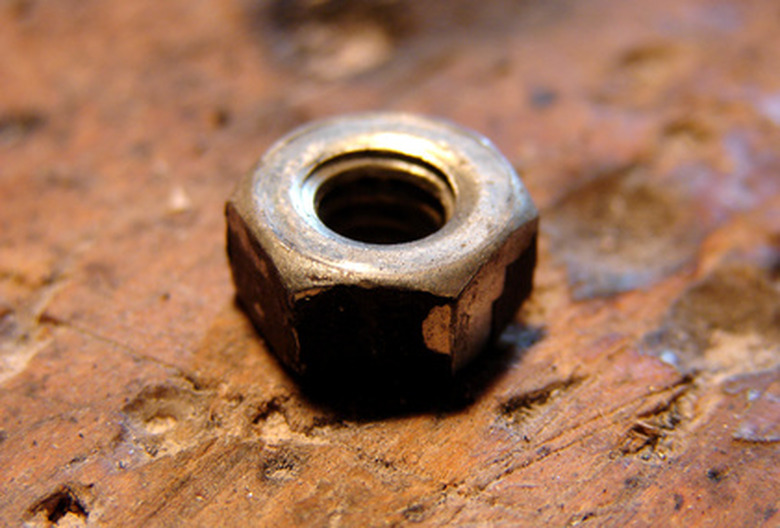How To Determine The Right Size Socket For A Nut
Things Needed
-
Nut
-
Digital caliper
Take a look inside or under your washing machine, dryer or lawnmower and you're sure to find at least one nut holding things together. Nuts are essential fasteners in most home and garden appliances. Nuts are usually made of metal. Hex nuts, the most common type, have six sides. You can use socket wrenches to tighten and loosen hex nuts. To do this successfully, you must use the correct size socket on your socket wrench. You can determine the right size socket with a digital caliper.
Imperial System
Step 1
Turn on the digital caliper and set it to read in inches, not millimeters. Set the nut on a flat surface. Open the caliper jaws far enough to allow the nut to fit between them.
Step 2
Close the caliper jaws until each jaw rests on one flat side of the nut on opposite sides.
Step 3
Check the caliper display. The reading shows the size of the nut as a decimal. Imperial sockets are sized in fractions of an inch. The website Ham Universe has a table for converting decimals to fractions. Look through the table's decimal column and select the first decimal larger than your caliper reading. Select the corresponding fraction. The website Sizes has a table showing Imperial (American) socket sizes. If the fraction is listed, it's the size of your nut and required socket. If you find no corresponding fraction, your nut and its required socket is sized in metric units.
Metric System
Step 1
Turn on the digital caliper and set it to read in millimeters, not inches. Set the nut on a flat surface. Open the caliper jaws far enough to allow the nut to fit between them.
Step 2
Close the caliper jaws until each jaw rests on one flat side of the nut.
Step 3
Check the caliper display. The reading shown is the size of the nut as a decimal. Metric sockets are sized in millimeters. The website Sizes has a table showing metric socket sizes. Select the first millimeter size larger than your caliper reading. This is the size of your nut and required socket.
